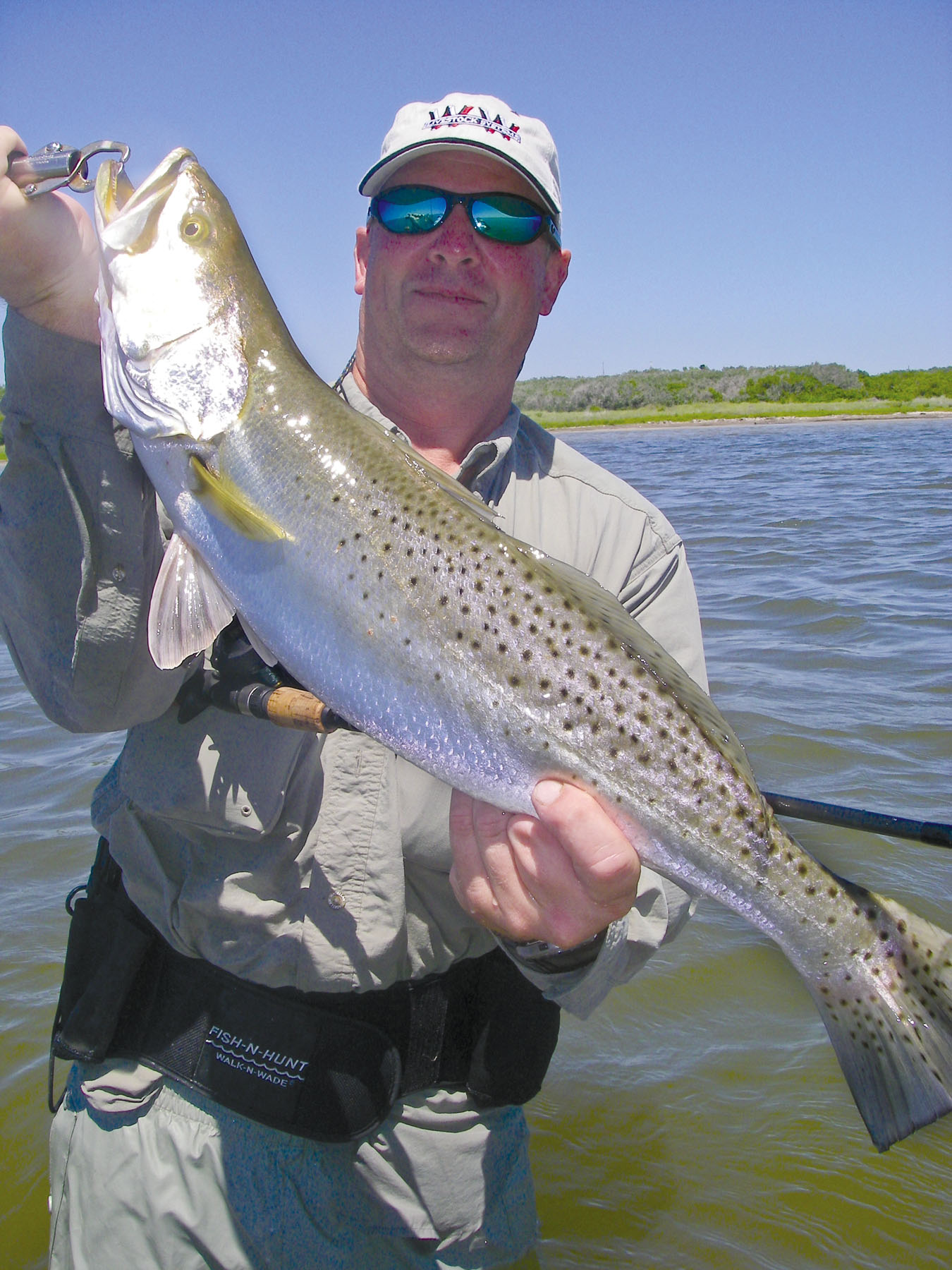Hooked Up: July 2010

While Louisiana is dealing with severe environmental issues, Baffin and the Upper Laguna water quality is "trout green" to "air clear." A conversation with Capt. Mike McBride in Port Mansfield confirms the same down south. As a guide that makes a living behind artificial lures, good water quality and being able to read structure where the fish are holding has a tendency to make me look smarter than I really am. Especially when I tell a client, "Cast just past that point of grass that is coming off of the bank and be ready for a hit." As the cast unfolds and I watch their Waterloo load up I always thank God for how lucky we are to live and play in such a pristine area that provides repeating smiles, fish at the end of our lines, great clients, and friends.
We are catching trout and redfish on all kinds of structure at this time. Of course, they are not all trophy-class fish, but those are still being caught when we concentrate our efforts on them. Good weather days are giving us a tremendous amount of catching on an assortment of lures. Trout in the seven pound class have been common when given favorable conditions. Even larger trout have been in the mix for some lucky clients but the monster girth has slipped away on most of the big girls.
Days are starting early at Bluff Landing Marina for me. We are generally headed south by 5:30 to catch the earliest of the morning bite in Baffin. Our game plan may change some mornings if we catch a whiff of slicks coming off a spoil, a set of rocks, etc. One slick may not slow me down but multiple slicks in a 100 yard stretch will. The main thing to remember is that the fish creating the slicks are usually up-current or up-wind of it. Ideally, the angler will notice a slick when it is about the size of a small plate. When that happens you can rest assured that the fish is in the immediate vicinity (if current and winds are light). In many cases you will smell the slick before you see it. Trust your nose like a good pointing dog to find where it is coming from and where you need to be casting. As the sun rises and you can make out the structure where the slicks are originating, make a mental note of the depth, structure type, windward/leeward side, and apply that to the rest of the day when the slicks have gone away. Discovering and understanding such a pattern will bring you more opportunities for catching throughout the day, not just at first light.
As we finish up our rock hoppin' for trout in Baffin we have been headed back into the Laguna for more trout and greater numbers of redfish. As the sun gets high and hot, it is no secret that redfish will play longer than trout. The reds will be abundant on the spoil islands, King Ranch shoreline, and even schooled in the deeper waters adjoining Emmord's Hole for the drift fishermen. Say what you want about the mud ape but I have yet to meet the diehard trout guy that did not enjoy catching one; unless, of course, he is standing in a school of eight pound trout.
A reminder from my article last July
As the water temperatures rise above 80 we have but a short time from the hookset to the release before a good trout starts getting weak. Here are some tips to help insure the fish you release will be strong and healthy to fight another day.
1. Land the fish as soon as possible.
2. Use a Boga Grip or similar device to handle the fish. Tight hand gripping above the gills or thrashing in a net is bad news for fish that are to be released.
3. If possible, remove the hook with her still in the water, still able to breathe.
4. With landing device still attached, keep her upright in the water until you are absolutely ready for your buddy to snap a photo.
5. Take a quick weight, set her back in the water upright, slide back and forth to get the water flowing over the gills, cut her loose at the first hint of tail movement.
Set 'em Loose, Capt David Rowsey


